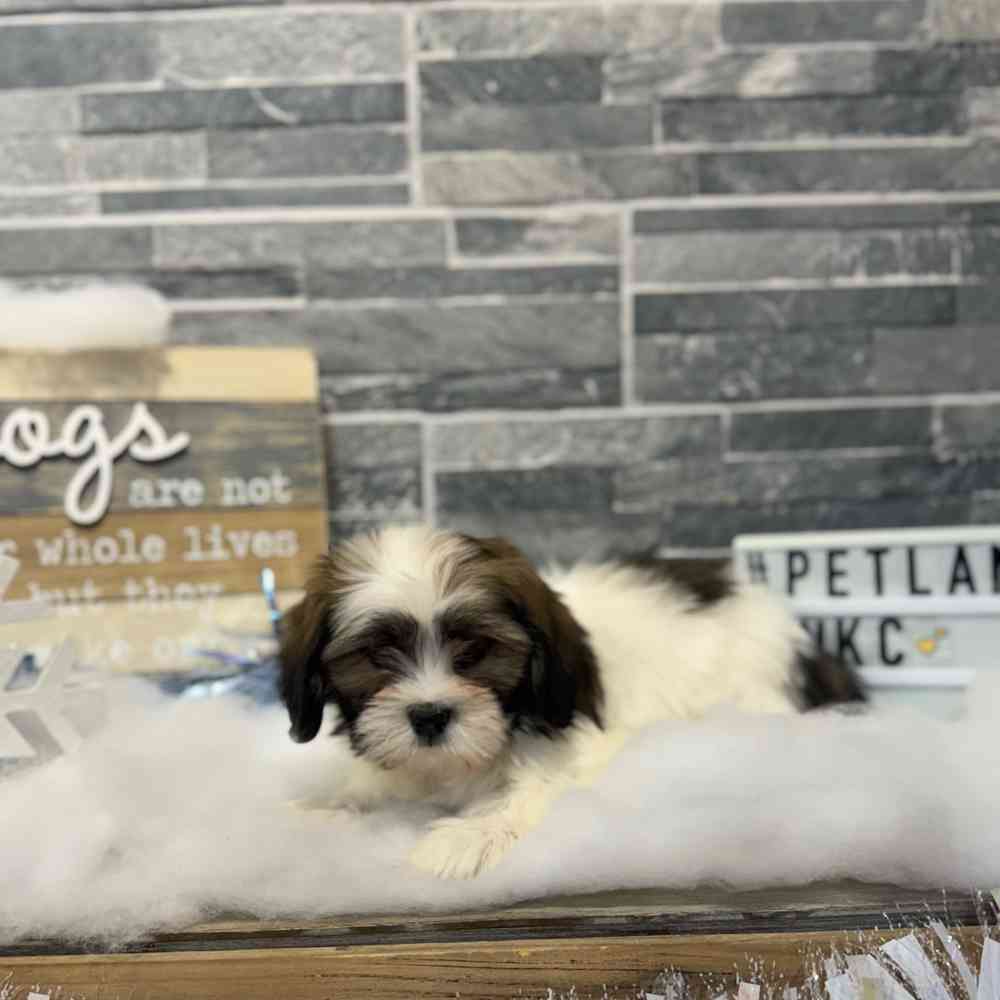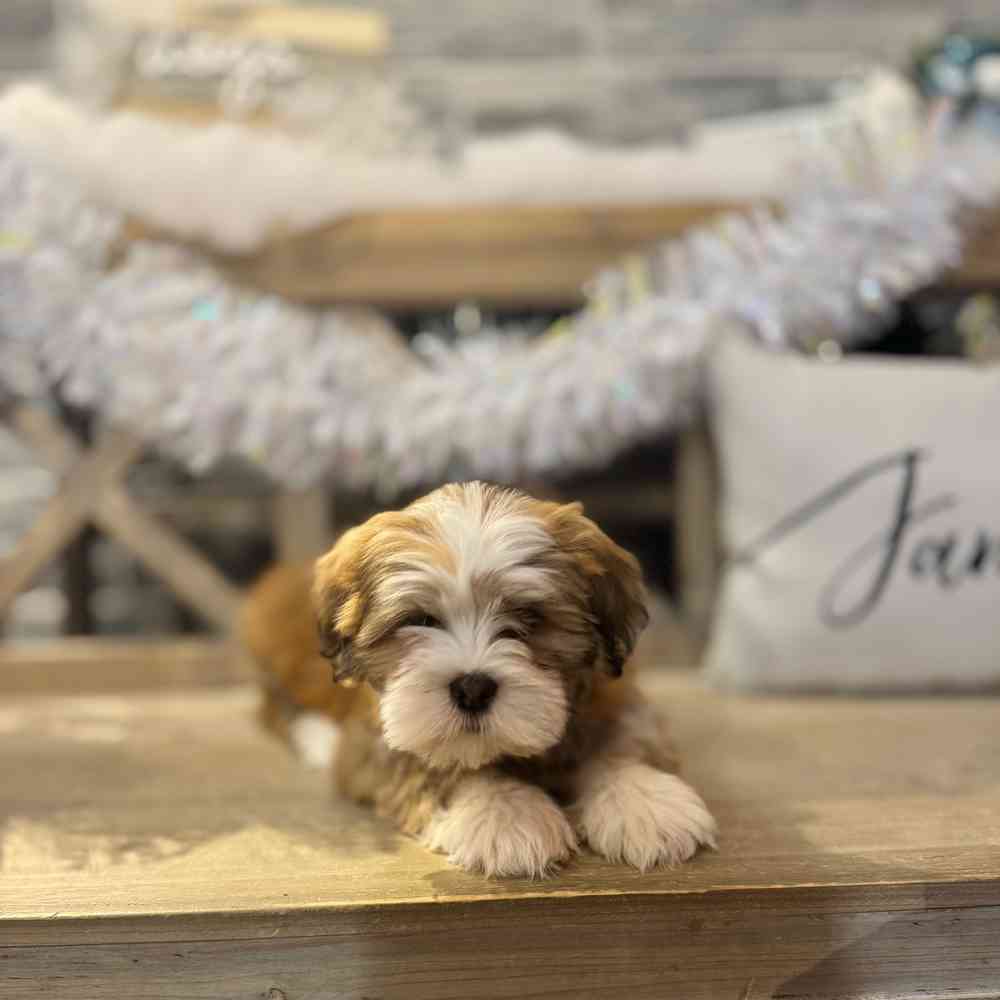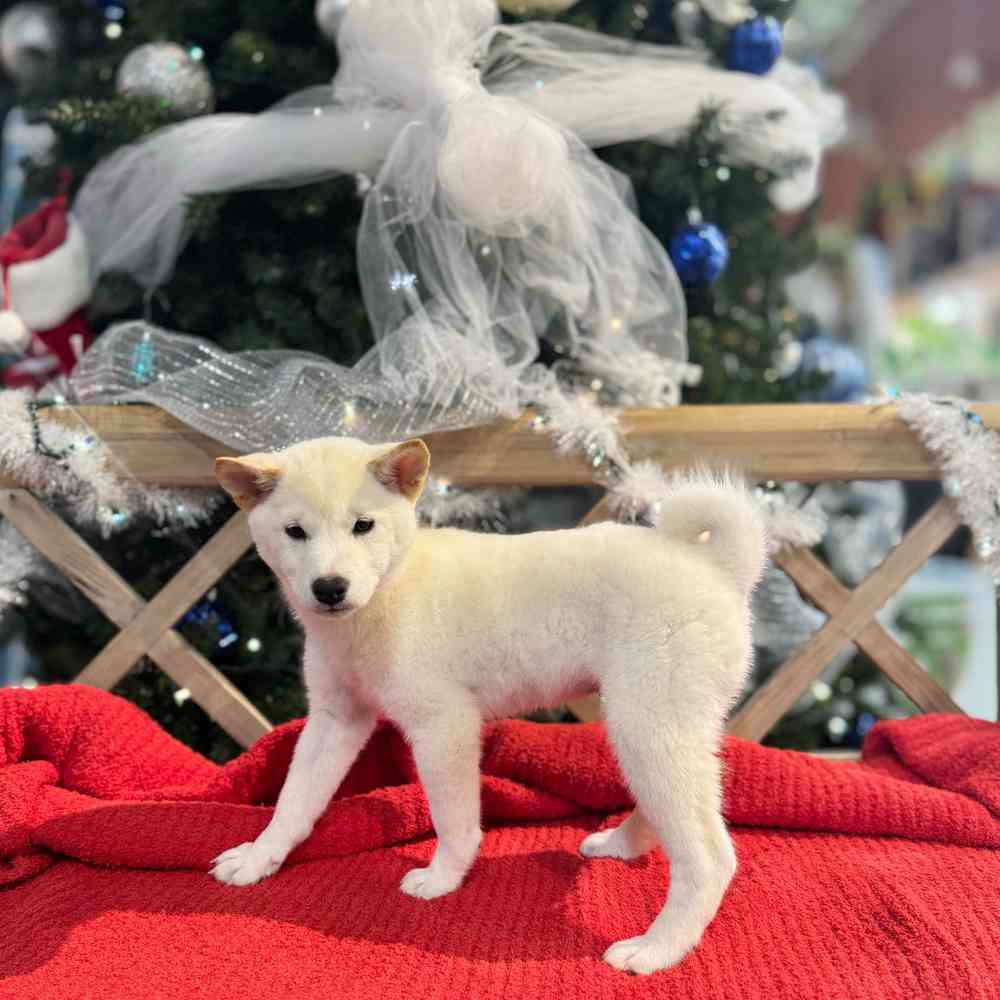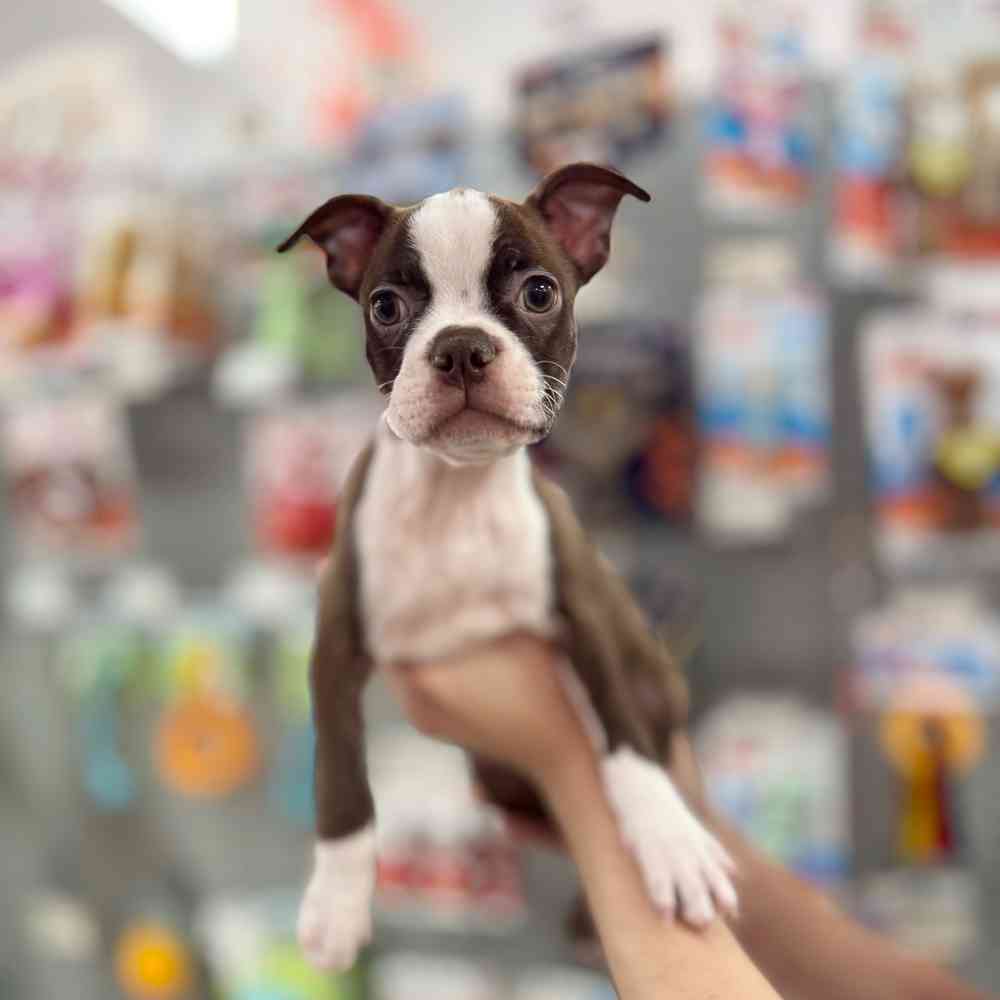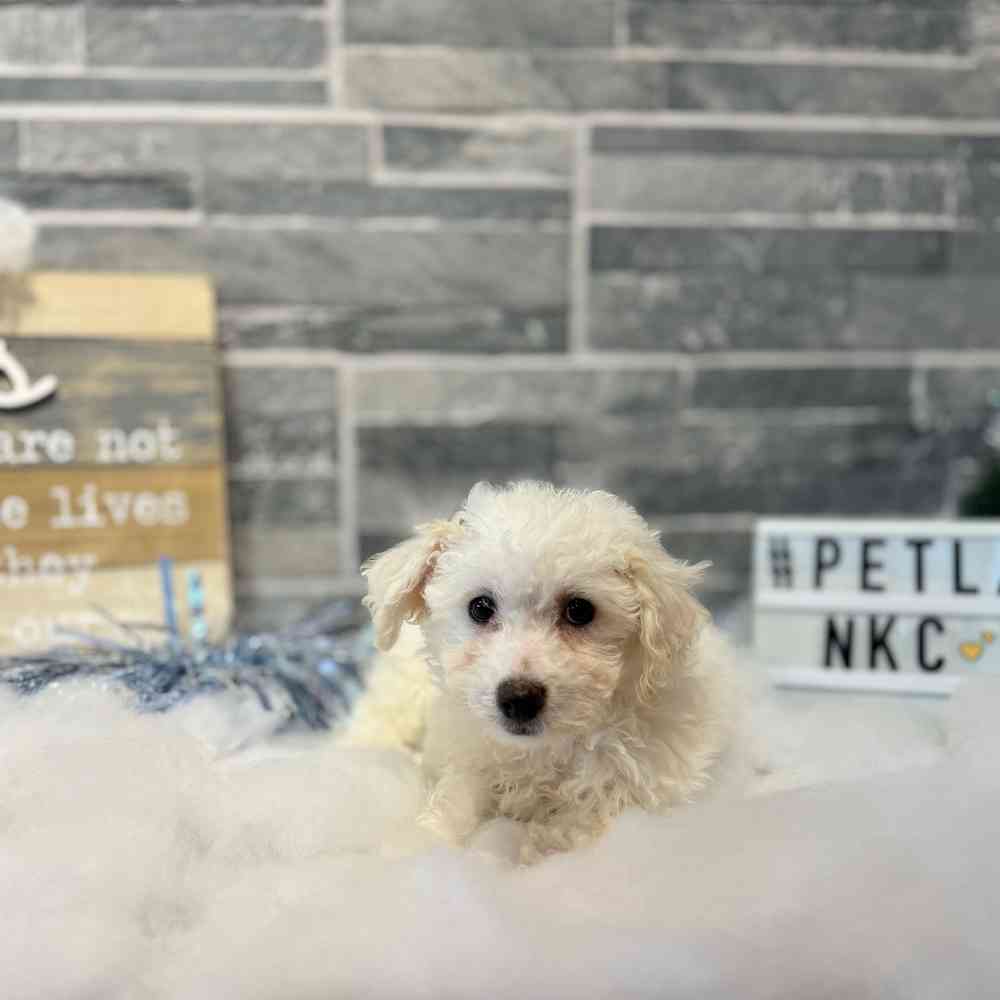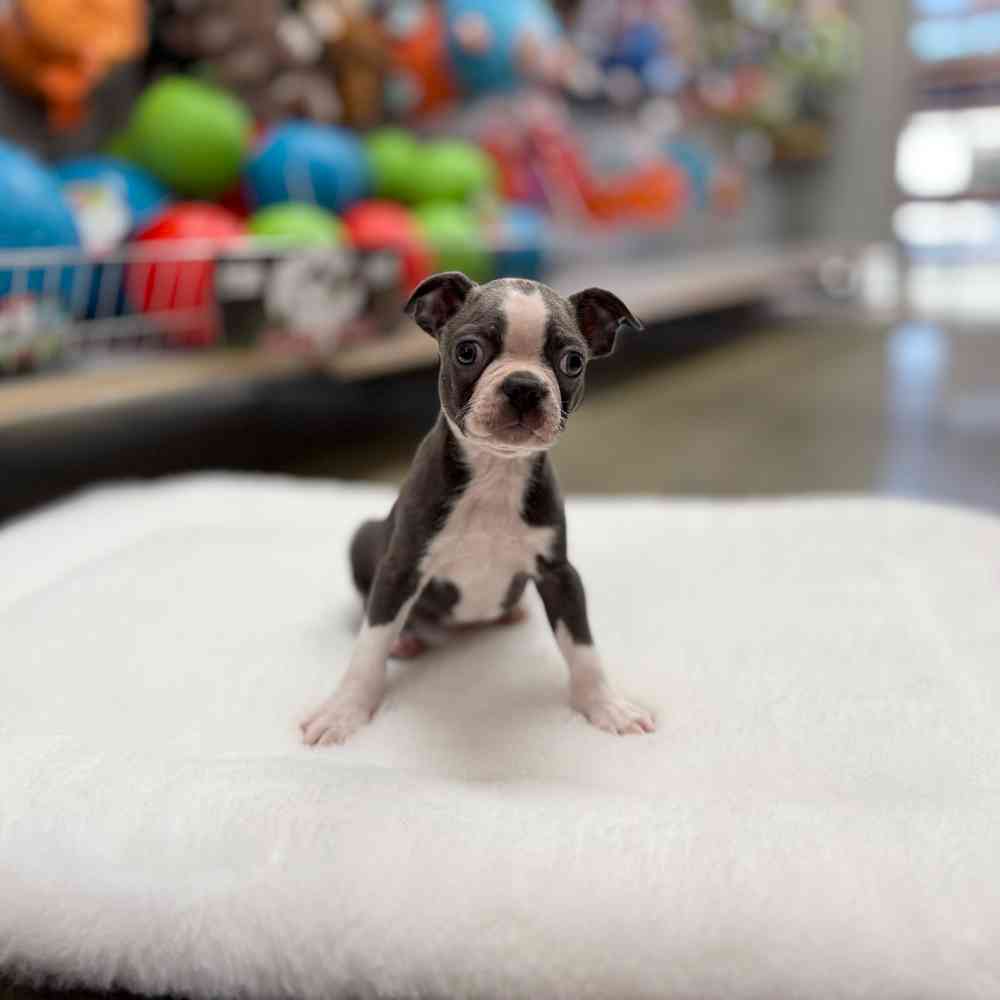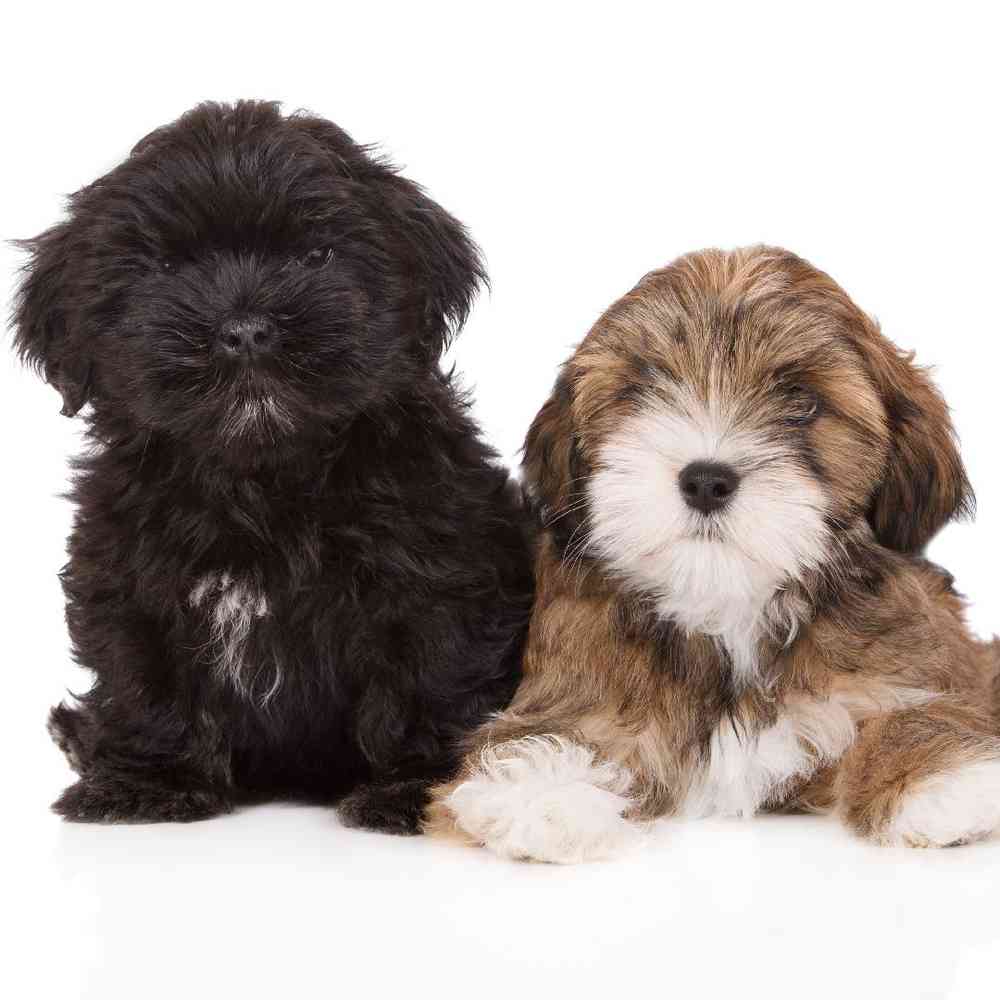
Apartment Friendly
AKC Registrable
Family Dog
Lhasa Apso
The lavishly coated Lhasa Apso is a truly ancient breed! They are smart, confident, and complex. Lhasas are family comedians but also have a protective nature!
Available Pups
Puppy Knowledge
Breed Info
Clubs, Registries & Associations
American Canine Association Continental Kennel Club Universal Kennel Club International American Kennel Club United All Breed Registry America's Pet Registry, Inc. United Kennel Club (Based on breed recognition. See store for details on this particular puppy.)
Group
Non-Sporting
Heritage
The Lhasa Apso, an ancient breed dating back at least 800 BC, was bred for use as a watchdog in Tibetan temples and monasteries. This breed was considered sacred and that they imparted good luck to their guardians. In the early 20th century, the little Lhasa Apso was introduced to other parts of the world.
Description
Small, up to 10-11” at the shoulders, weighing anywhere from 13-15 pounds. The Lhasa Apso is a sturdy little dog with a long single coat in colors of cream, gold, honey, slate, smoke, brown/white/black, and dark grizzle. The puppy coat may change color as the dog matures.
Health Awareness
The Lhasa Apso has a long life expectancy of 15 years with the oldest recorded age of 29 years! This breed is prone to hip dysplasia, kidney disorders, eye problems, bleeding ulcers, and skin allergies.
Personality
The Lhasa Apso is a spirited little dog and makes an excellent fearless watchdog with an acute sense of hearing. Nothing gets by a Lhasa Apso! They are assertive and will bark their commands at you to get you to comply to their wishes! Independent, curious, clever, and persistent, your Lhasa Apso will entertain you with lively antics. They enjoy learning, and training will be easy if you use rewarding methods. This can be a willful breed and they want to know what’s in it for them when you’re training. You need to be a calm, knowledgeable, and humane owner giving consistent and committed leadership to your Lhasa Apso using only motivational training methods. While affectionate with their family, they are wary of strangers, fearful of the movements and noises of toddlers, and will bite when frightened or surprised. Socialize, socialize, socialize your Lhasa Apso when a puppy to diminish his or her fears.
Exercise/Energy Level
The Lhasa Apso is a busy and active breed, and requires a brisk daily walk and plenty of off-leash play and running in a safe, fenced area. They also need mental stimulation to prevent boredom and destruction, so be sure to provide your Lhasa Apso with plenty of interactive toys that challenge their problem-solving skills.
Additional Information
Grooming Requirements: Requires daily brushing and professional grooming. Their long, heavy coat requires regular grooming. Average shedders. Coat: Long Shedding: Little to no shedding Hypoallergenic: Yes Apartment Living: Good for apartment living if given sufficient exercise. Lap Dog: Yes Good With Children: Must be socialized to all ages of children when a puppy. Better with older children who understand how to respect this breed. The Lhasa Apso does not tolerate roughhousing and will bite. Good With Other Pets: Not generally trustworthy with other pets and will fight with other dogs.
Breed Standard
Character
Gay and assertive, but chary of strangers.
Size, Proportion, Substance
Variable, but about 10 inches or 11 inches at shoulder for dogs, bitches slightly smaller.
Head
Head---Heavy head furnishings with good fall over eyes, good whiskers and beard; skull narrow, falling away behind the eyes in a marked degree, not quite flat, but not domed or apple-shaped; straight foreface of fair length. Nose black, the length from tip of nose to eye to be roughly about one-third of the total length from nose to back of skull. Eyes---Dark brown, neither very large and full, nor very small and sunk. Ears---Pendant, heavily feathered. Mouth and Muzzle---The preferred bite is either level or slightly undershot. Muzzle of medium length; a square muzzle is objectionable.
Neck, Topline, Body
The length from point of shoulders to point of buttocks longer than height at withers, well ribbed up, strong loin, well-developed quarters and thighs.
Coat
Heavy, straight, hard, not woolly nor silky, of good length, and very dense.
Feet
Well feathered, should be round and catlike, with good pads.
Color
All colors equally acceptable with or without dark tips to ears and beard.
Temperament
Confident, Smart, Comical
Overview
About
Standing less than a foot high at the shoulder, Lhasas are small but hardy dogs of aristocratic bearing. They’re famous for a floor-length, flat-hanging coat, parted in the middle and draping each side of the body. A feathery tail curls over the back in the distinct manner of Tibetan breeds. The breed’s fans say the dark, oval-shaped eyes—peeping through lavish facial hair—are the windows of a Lhasa’s merry soul. The complete picture is unmistakably Asian: exotic, elegant, and serenely well balanced.
History
This thousand-year-old breed served as sentinel dogs at palaces and Buddhist monasteries isolated high in the Himalayan Mountains. For centuries Lhasas have been associated with the Dalai Lama. In the late 1940s, dogs bred and given as gifts by the Fourteenth Dalai Lama helped establish the breed in America. In Tibetan folklore the country’s protector is the mythical Snow Lion, and Lhasas, the “bearded lion dogs,” are the Snow Lion’s earthly representatives. Lhasa is the name of Tibet’s sacred city; Apso means “longhaired dog.”
Standard
Heavy head furnishings with good fall over eyes, good whiskers and beard; skull narrow, falling away behind the eyes in a marked degree, not quite flat, but not domed or apple-shaped; straight foreface of fair length. Nose black, the length from tip of nose to eye to be roughly about one-third of the total length from nose to back of skull.
Nutrition
Lhasa Apsos thrive on high-quality food. Since they usually have thick skin to support their heavy hair coat, Lhasas need a diet with good protein and fat levels. Breeders recommend a food with fat level above 14 percent. The protein source (meat, fish, game, etc.) depends on the individual dog’s tolerance and taste. Most Lhasas tend to utilize their food very well, and even slight overfeeding can lead to unpleasant digestive outcomes. Food can be fed dry, or slightly moistened with a little flavor enhancement such as cooked meat or a grain-free canned food. Whether to feed once or twice a day is a personal choice for owners, but dogs thrive on consistency, so it is recommended to keep the frequency and time of day constant.
Grooming
Long hair or puppy cut? Both require regular maintenance, and this is a choice for the owner to make. Lhasas in a puppy cut or other clip still should be brushed regularly and bathed between visits to the groomer. Long hair requires regular brushing, using the right tools and techniques. Expect to bathe a long coat at least every two weeks, and brush at least once between baths. Thorough rinsing is essential, as shampoo residue irritates the skin. Conditioners and finishing sprays make grooming easier. Freshly bathed long or clipped hair should be thoroughly dried and brushed, as damp hair, even when clean, will mat.
Exercise
The Lhasa is generally not a couch potato and is adept at self-exercise. They will race around an apartment to run off energy, entertain themselves in a fenced yard, or take their owners on a brisk walk. Mental stimulation is as important as physical exercise. They excel at agility, can do scent work, and have been known to retrieve and herd. There are talented Lhasas certified as therapy dogs working in hospitals, nursing homes, colleges, and prisons.
Training
Lhasa Apsos will please you if it pleases them to please you. They are highly intelligent, sometimes compared to a willful toddler. They can learn just about anything that a trainer makes interesting enough to master—on their terms. They do not appreciate repetitive drill and can become uncommonly stubborn if bullied or badgered. Most cases of unacceptable Lhasa behavior involve situations with inconsistent, improper, or nonexistent human leadership. This is a breed for creative, motivated people who enjoy a canine companion of like mind.
Health
The Lhasa Apso is generally a robust, healthy dog. The most serious health problem in the breed is hereditary kidney dysfunction, which can be present in mild to severe form. There is no reliable test to detect carriers. Prospective owners should seek out experienced, conscientious breeders who are aware of the condition and remove affected individuals from their breeding programs. Breeders have made great progress toward eliminating this problem, and the risk of acquiring an afflicted puppy from a knowledgeable breeder is slim. Other conditions to inquire about are dry eye, progressive retinal atrophy (PRA), slipping stifles, hip dysplasia, and cherry eye.




